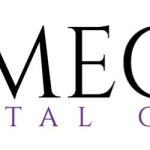- why-plaque-control-matters-more-than-you-think
- manual-vs-electric-which-type-offers-better-plaque-control
- features-that-make-the-best-toothbrush-for-plaque-control
- real-user-story-how-switching-to-the-right-toothbrush-changed-my-health
- scientific-findings-supporting-effective-brush-design
- customizing-your-choice-age-lifestyle-and-dental-needs
- how-dentistry-toothtruth-can-help-you-choose-smartly
1. Why Plaque Control Matters More Than You Think
Plaque is more than just a cosmetic issue. It’s a sticky biofilm of bacteria that builds up on your teeth, feeding on sugars in your food and releasing acids that erode enamel. Over time, unchecked plaque can harden into tartar, leading to gum disease, tooth decay, and even systemic health issues like cardiovascular problems. That’s why choosing the best toothbrush for plaque control isn’t just about white teeth — it’s about protecting your long-term health.
The American Dental Association (ADA) recommends brushing twice a day, but what’s equally important is using a brush that’s effective at breaking up and removing plaque before it turns into something more stubborn. Many people think all toothbrushes are created equal — but as you’ll discover in this article, that couldn’t be further from the truth.
Whether you're struggling with early signs of gingivitis or simply want to improve your oral hygiene routine, understanding which brush works best for plaque control is your first line of defense. Let’s break down what actually matters — and why your current toothbrush may be failing you.
2. Manual vs. Electric: Which Type Offers Better Plaque Control?
One of the most debated questions in oral hygiene is whether manual or electric toothbrushes are better at fighting plaque. The answer, backed by years of research, leans heavily in favor of electric models — but with some caveats.
A 2022 meta-analysis published in the Journal of Clinical Periodontology found that electric toothbrushes, particularly oscillating-rotating and sonic models, removed up to 21% more plaque than manual toothbrushes over a three-month period. That’s a significant advantage, especially for people with braces, limited dexterity, or early gum disease.
Manual brushes can still be effective — but only if used with the correct technique, pressure, and duration. That’s where most people fall short. A study by the CDC revealed that the average brushing time in the U.S. is just 45 seconds — far below the recommended two minutes.
Electric toothbrushes with built-in timers, pressure sensors, and angled bristles can help compensate for these common user errors, making them the preferred option for those serious about plaque control.
3. Features That Make the Best Toothbrush for Plaque Control
When evaluating the best toothbrush for plaque control, it's not just about brand or price — it’s about functionality. Here are key features to look for:
- Soft, densely packed bristles: Gentle on gums but tough on plaque.
- Angled brush head: Helps reach behind molars and under the gumline.
- Timer and pressure sensor: Ensures optimal brushing time without harming enamel.
- Oscillating or sonic motion: Provides superior cleaning action compared to back-and-forth manual strokes.
Some top-rated brushes like the Philips Sonicare ProtectiveClean or Oral-B iO Series feature AI-driven sensors that guide your brushing in real time. These models not only enhance plaque removal but also create lasting habits by reinforcing proper brushing techniques.
For those on a budget, basic models like the Oral-B Pro 1000 or Colgate Hum still deliver powerful plaque-fighting performance without advanced tech — proving that efficiency doesn’t always require a $200 brush.
4. Real User Story: How Switching to the Right Toothbrush Changed My Health
Samantha, a 38-year-old office manager from Seattle, had struggled with sensitive gums and frequent plaque buildup for years despite regular brushing. “I was shocked when my dentist said I had early-stage periodontal disease,” she recalls. That wake-up call led her to ditch her old drugstore manual brush and invest in an electric toothbrush recommended by her hygienist.
“I bought the Oral-B Genius X — and within six months, my hygienist saw a 70% reduction in plaque and inflammation.” More than just numbers, Samantha says she noticed fresher breath, less bleeding, and more confidence in her smile. “It really wasn’t about brushing harder, just smarter.”
Her story echoes thousands of others across forums and dental blogs — proof that the right brush, used consistently, can completely transform your oral health.
5. Scientific Findings Supporting Effective Brush Design
Research continues to show that brush design plays a critical role in how effectively plaque is removed. In a study conducted at the University of Michigan’s School of Dentistry, researchers compared over 20 brush types and concluded that brushes with angled bristles removed 25% more plaque in posterior teeth than flat bristles.
Another finding? Brushes with smaller heads allowed better maneuverability, especially around the gumline and back molars — both hotspots for plaque buildup.
When combined with ADA-approved fluoride toothpaste, a well-designed toothbrush can create an optimal environment for plaque prevention. Some electric brushes also offer real-time feedback via mobile apps, helping users stay consistent and accountable.
So if you're relying on a decade-old manual brush with splayed bristles, it may be time to upgrade based on evidence, not just habit.
6. Customizing Your Choice: Age, Lifestyle, and Dental Needs
There’s no one-size-fits-all solution when it comes to the best toothbrush for plaque control. Your age, oral health status, and daily routine all factor into which brush is best for you.
For children, look for smaller heads with softer bristles and timers to teach good habits. For seniors or those with arthritis, ergonomic handles and pressure sensors can reduce strain and injury risk. If you wear braces, look for brushes specifically designed to clean around wires and brackets — like the Oral-B Ortho model.
Even lifestyle matters: if you travel often, consider a compact, USB-chargeable electric brush. Athletes or frequent snackers may benefit from brushing more than twice a day, making battery life and portability essential.
Consulting with your dentist or visiting specialized guides like Dentistry Toothtruth can help you identify the brush best suited to your specific needs — whether you're managing plaque proactively or trying to reverse early gum disease.
7. How Dentistry Toothtruth Can Help You Choose Smartly
Navigating the world of dental products can be overwhelming — but Dentistry Toothtruth is here to simplify that journey. We review and curate the top-performing brushes specifically based on plaque control effectiveness, affordability, and ease of use.
Whether you’re seeking your child’s first electric brush, an ADA-recommended plaque fighter, or a sleek option for travel, our team has tested and vetted the most reliable options on the market. Our product recommendations focus on clinical performance — not hype — and we’re always updating our listings based on the latest research and user feedback.
So if you’re still wondering which brush is truly the best toothbrush for plaque control, head to Dentistry Toothtruth for honest reviews, smart buying guides, and expert advice that helps protect your smile for life.







 Hawthorn Woods Family Dental Care5.0 (535 review)
Hawthorn Woods Family Dental Care5.0 (535 review) Friendly Smiles Family Dentistry4.0 (78 review)
Friendly Smiles Family Dentistry4.0 (78 review) Omega Dental Care4.0 (74 review)
Omega Dental Care4.0 (74 review) Gwynedd Family Dentistry4.0 (98 review)
Gwynedd Family Dentistry4.0 (98 review) Waukegan Dental Wellness0.0 (0 review)
Waukegan Dental Wellness0.0 (0 review) UI Health Mile Square Health Center - Primary and Immediate Care3.0 (13 review)
UI Health Mile Square Health Center - Primary and Immediate Care3.0 (13 review) The Importance of Oral Health Education During Pregnancy for a Healthy Pregnancy
The Importance of Oral Health Education During Pregnancy for a Healthy Pregnancy Best Tips for Brushing Your Teeth Properly for Healthy Gums: Essential Techniques for Oral Health
Best Tips for Brushing Your Teeth Properly for Healthy Gums: Essential Techniques for Oral Health Why Skipping Dental Checkups Can Lead to Bigger Oral Health Problems
Why Skipping Dental Checkups Can Lead to Bigger Oral Health Problems Advantages of Porcelain Dental Restorations
Advantages of Porcelain Dental Restorations How Can Diabetes Cause Tooth and Gum Problems? Preventing and Managing Oral Health Issues
How Can Diabetes Cause Tooth and Gum Problems? Preventing and Managing Oral Health Issues Healthy Habits for Promoting Good Oral Health and Hygiene: Tips for a Healthy Smile
Healthy Habits for Promoting Good Oral Health and Hygiene: Tips for a Healthy Smile